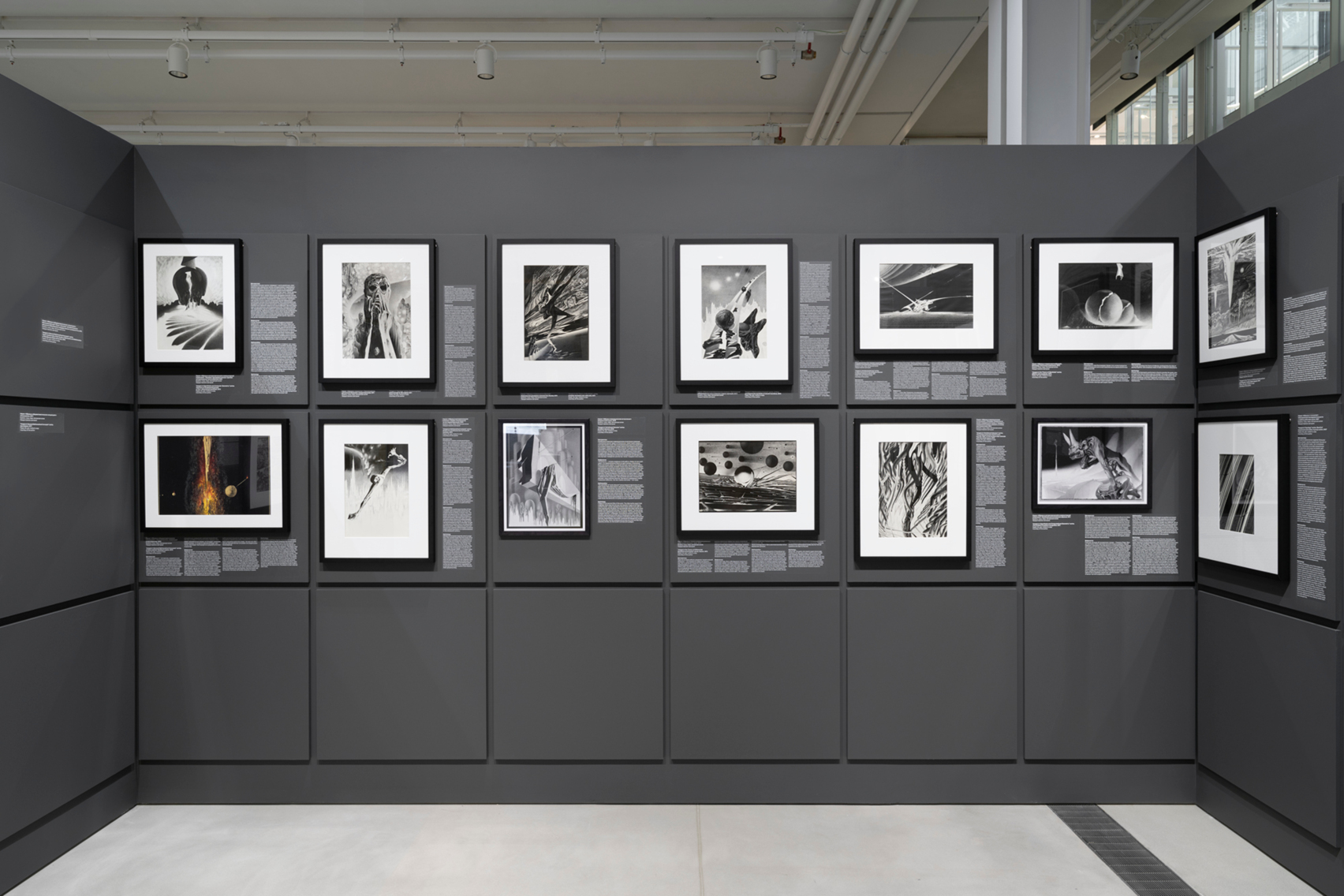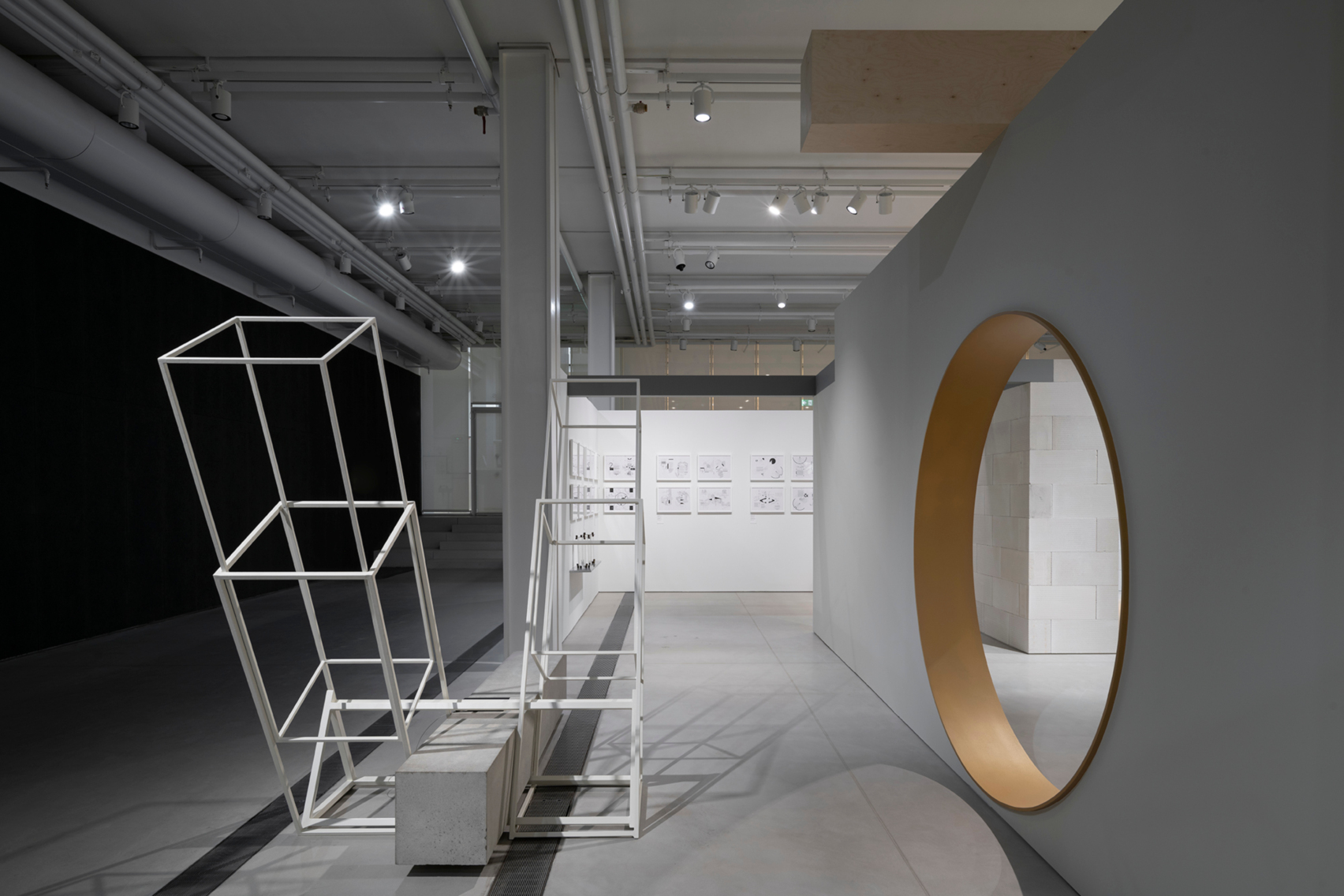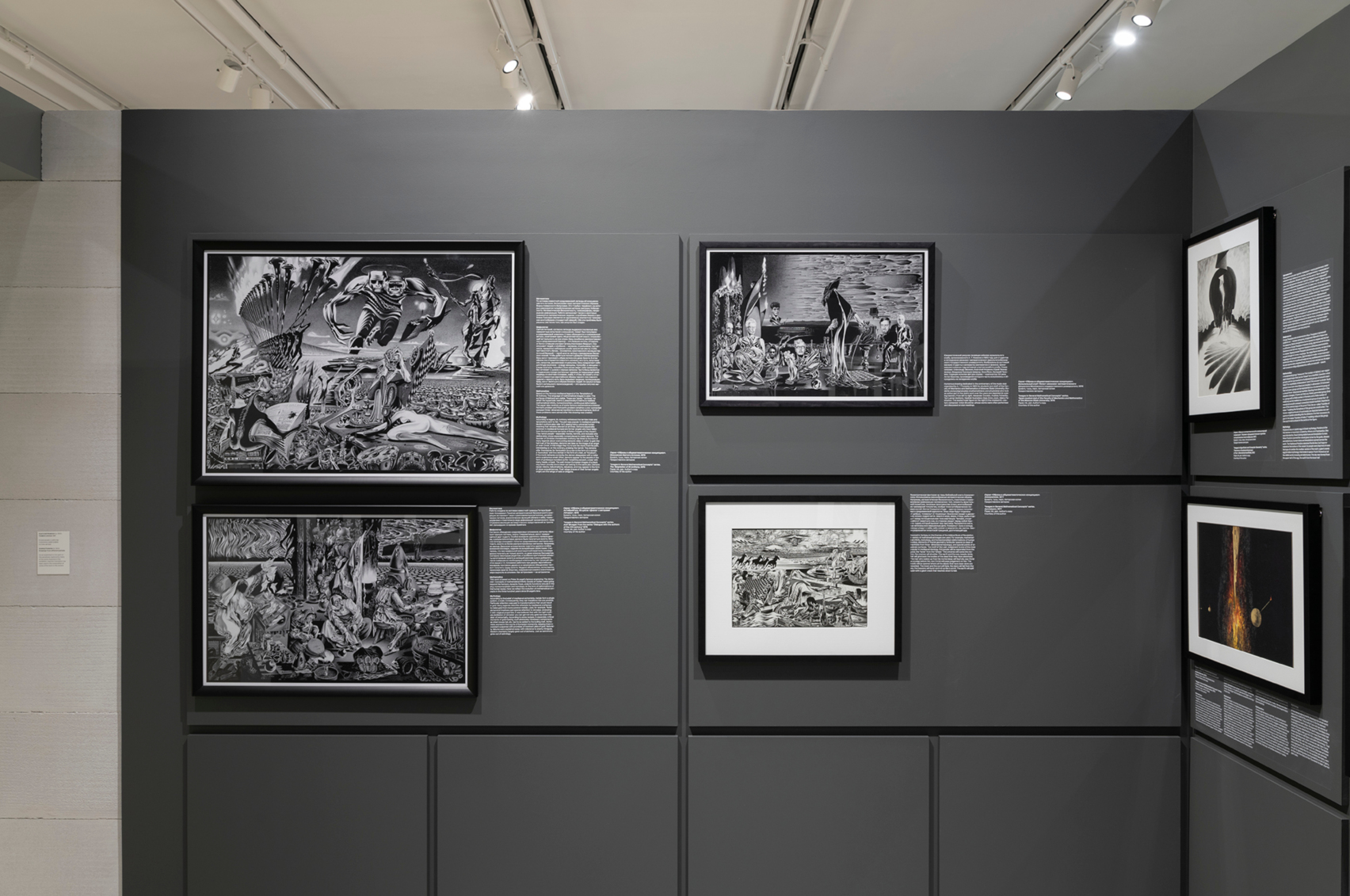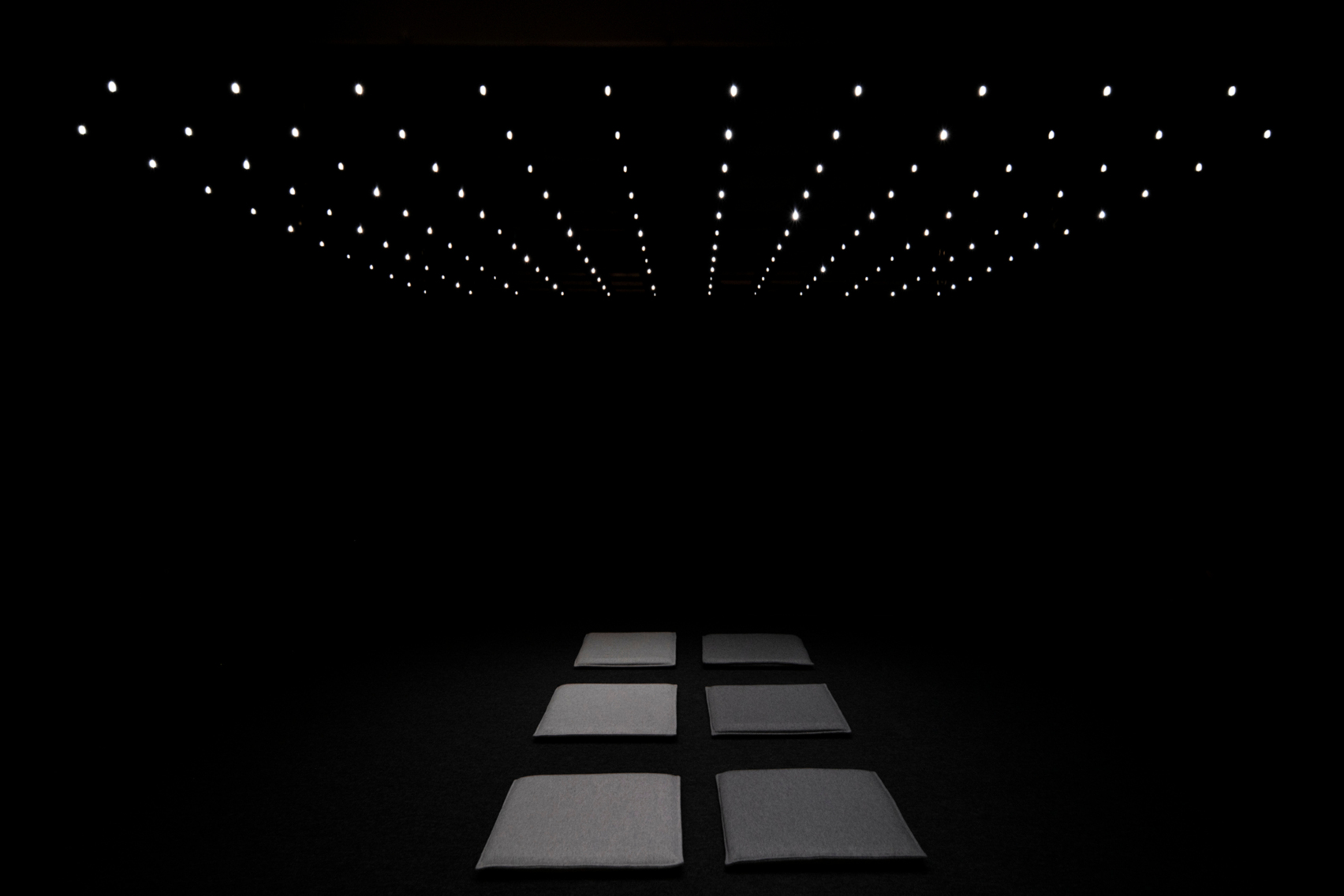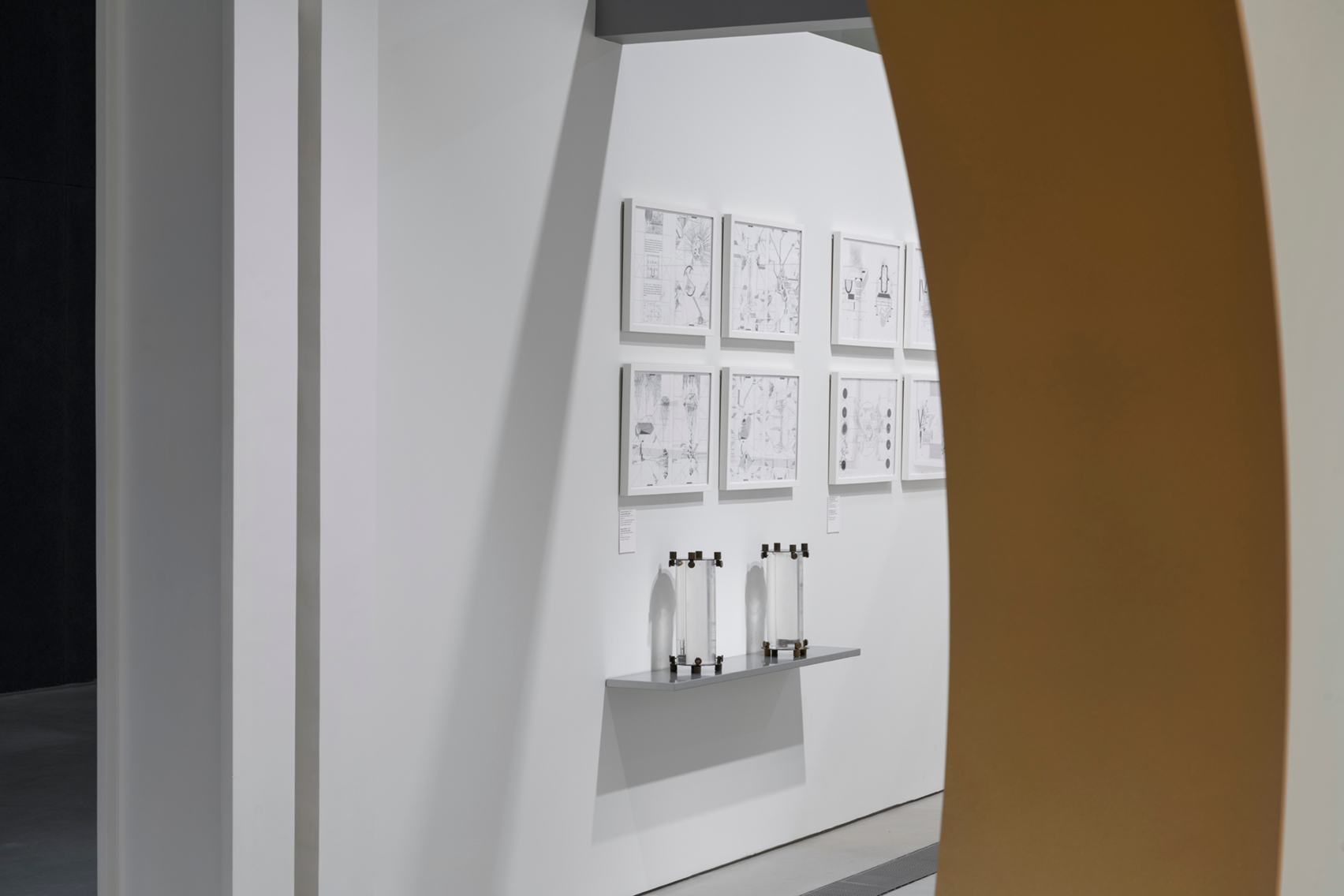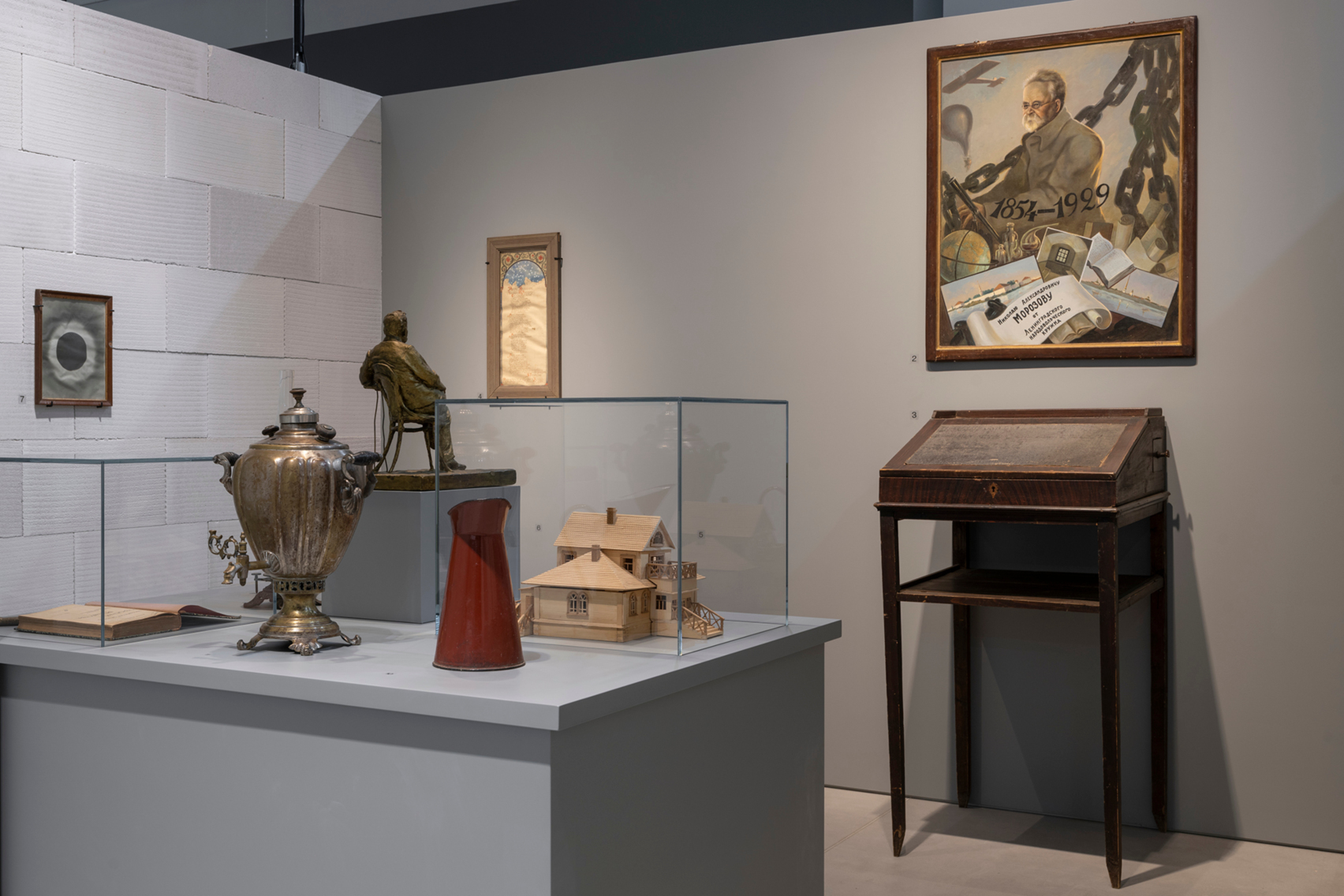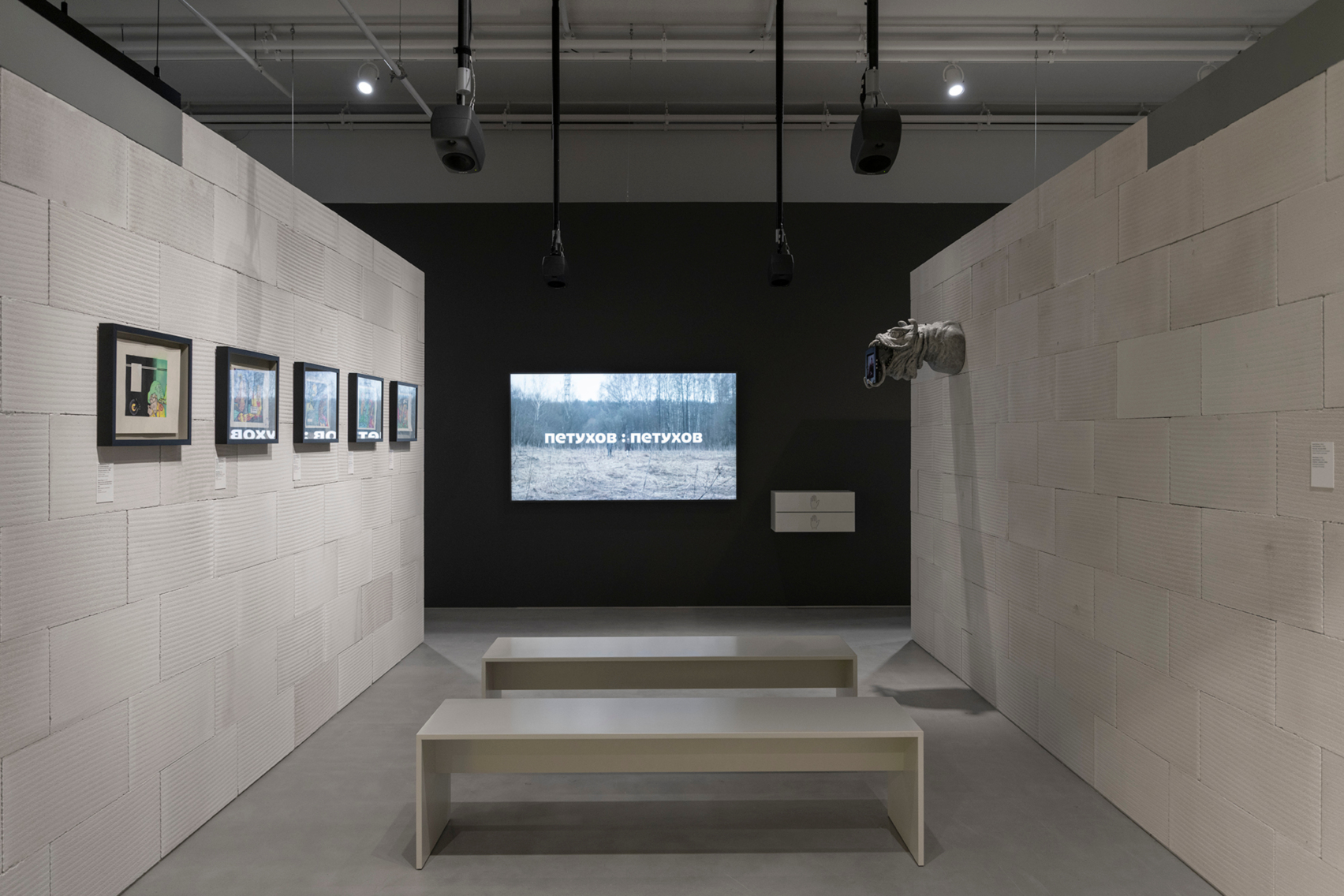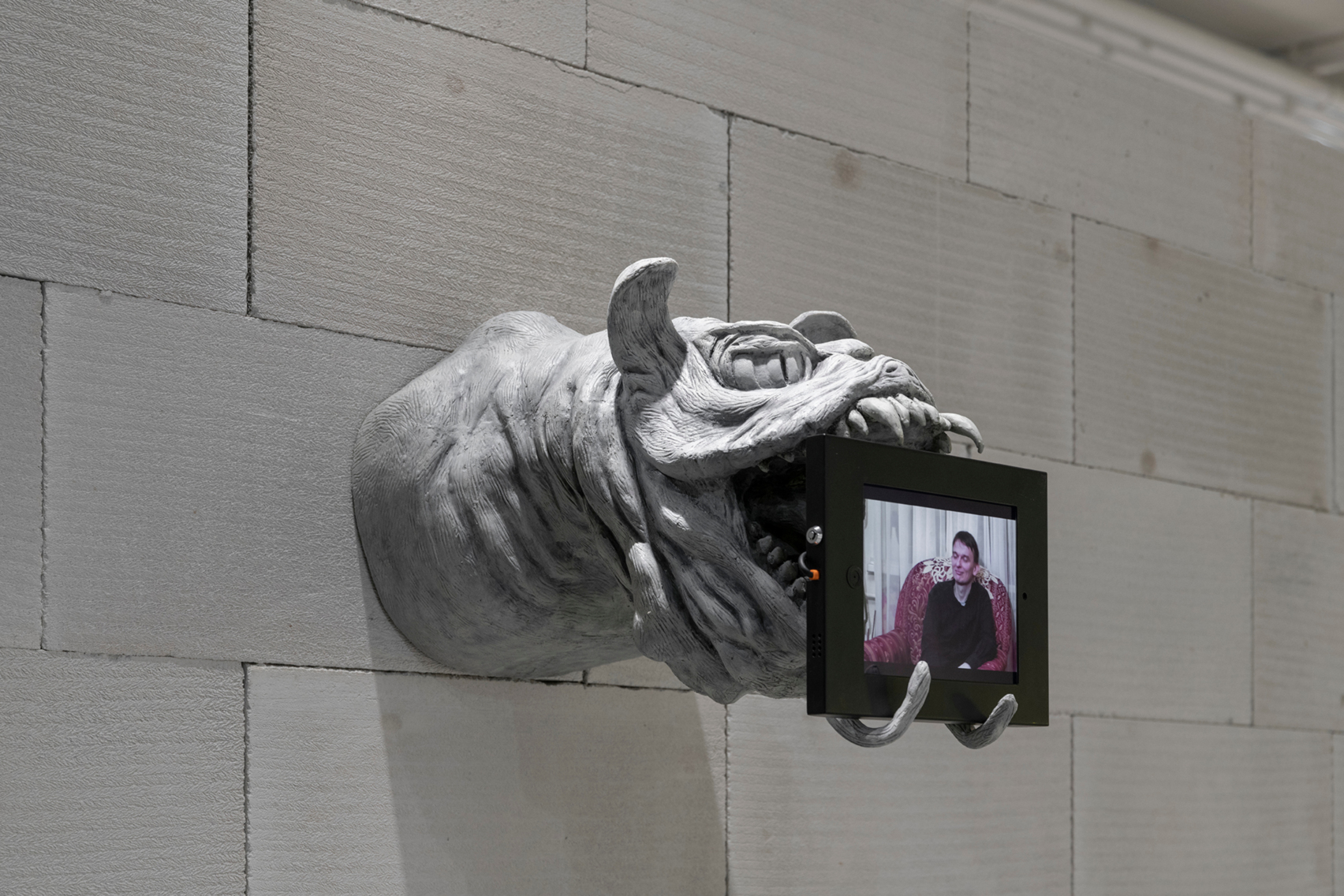An exhibition and an essay, Star Vengeance explores ideas that seem fantastical despite having been conceived by scientists alongside concepts and narratives imagined by artists that seem quite believable.
Star Vengeance
- Date:
- 19 Oct 2023–
21 Jan 2024
- Age restrictions
- 12+

Illustration: Ksenia Dubrovskaya
At the centre of the exhibition is the figure of the fully-realised human being: a scientist, writer, artist, and experimenter who creates the world anew, piecing it together from personal ideals and precise facts, imaginings and scientific experiments, general principles and private concerns.
Star Vengeance takes its name from a five-part novel by the Russian science fiction writer Yuri Petukhov, the hero of which battles the universal forces of evil alone. Petukhov has the same surname as one of the exhibition participants, the artist Alek Petuk (Petukhov), and the similarity of their names led to reflections on how coincidences, both real and imaginary, have influenced European conceptions of the role and place of the individual in the world.
Leonardo da Vinci’s Vitruvian Man (circa 1490) illustrates an idea that has been at the centre of Western culture over the last centuries: the human being is the foundation and measure of all things. “As above, so below” states the principle of likeness or analogy.This tenet of hermetic philosophy was of great influence on Renaissance scientists and thinkers and all European culture of the years that followed. According to this idea, man and the universe are seen as mirror images of one another. Accordingly, the purpose and task of man is to return the world to its original harmony, the foundation of which he must find within himself. The European alchemists pursued the same end. They searched for the philosopher’s stone because it would enable not just the transformation of “base” metals into “noble” silver and gold, but also the transmutation of matter, the transfiguration of consciousness—that is, it would enable the world to be brought into correspondence with a higher, desired order.
Today, in the context of the increasing spread of social networks, of artificial intelligence, and of a personalised approach in all spheres of production and consumption, human consciousness seems poised to merge with the global informational and technological environment, and the Early Modern era’s promise of the “Reign of the Human Being” looks more realistic than ever before, although it does not guarantee humans freedom. Amidst today’s digital informational flows, which greatly exceed the cognitive ability of any single individual, we find ourselves alone once again, each of us forced to seek a formula of the world (a philosopher’s stone) that will allow us to piece together a coherent picture of it from an endless diversity of knowledge and practices, symbols and objects.
Photo: Daniel Annenkov
One finds a small library at the main entrance to the exhibition. It contains works that either portray key figures in the project or were written by them, as well as books that showcase the range of themes and subjects touched upon by Star Vengeance. These works can be taken down from the shelves and read in the exhibition hall.
Images generated by the Order of Sophic Marxists using the ruDALL-E neural network are also displayed here. This anonymous group of philosophers and artists published a programmatic text in 2022 titled Marx the Alchemist, in which these images featured as illustrations.
VOTIW* by the contemporary artist Alek Petuk (Alexei Petukhov, b. 1984) and the transdisciplinary group Coincidental Institute to which Alek Petuk belongs comprises elements of architectural installation embedded in the structure of the exhibition, a series of site-specific performative events, and an eponymous artist’s book intended to summarise and illustrate the knowledge gathered through these processes.
The Petukhov : petukhov installation by Alek Petuk and Anna Pronina was made especially for the Star Vengeance exhibition. Its starting point is the similarity of the surnames of the artist Alek Petuk and the writer Yuri Petukhov (1951–2009). The central part of the Petukhov : petukhov consists of a video-essay in which two narratives intermingle: the personal history of Petukhov the artist, who was born in Ukhta in the 1990s and spent his childhood and youth there, and a reconstruction of the legend of Petukhov the writer’s death. Next to the installation, one finds the original illustrations of Petukhov’s books by Alexei Filippov.
In his youth, Nikolai Alexandrovich Morozov (1854–1946) was a member of the Narodnaya Volya party. He went on to become a multidisciplinary scholar, a populariser of science, an aeronaut, a cosmist, and a poet. The section of Star Vengeance dedicated to Morozov exhibits personal items, furniture, gifts from friends and admirers along with other memorial items from the scholar’s house-museum in the village of Borok (Yaroslavl Oblast). There are also several graphic collages from the series “Thunder and Dream” dedicated to Morozov by another participant in the project—the contemporary artist Evgeny Strelkov.
The Soviet and Russian mathematician, academic of the Russian Academy of Sciences, and winner of the State Prize of the Russian Federation Anatoly Fomenko (b. 1945) is primarily known to the wider public for his “new chronology,” a historical work he has been occupied with since the early 1980s. The Star Vengeance project does not set viewers the task of definitively assessing Fomenko’s historical views, but rather invites them to explore his artistic legacy. From the second half of the 1960s, Fomenko developed a process of synthesis of abstract mathematical and mytho-symbolic thinking in cycles of graphic works.
When working on the exhibition project, its architects Katya and Yura Plokhov relied on the ideas of architectural theorist Stephen Lauf, the author of the concept of Timepiece of Humanity, in which the body of Leonardo da Vinci’s Vitruvian Man is interpreted as a historical scale. The Timepiece of Humanity is represented in this exhibition by an illustration to the original edition of the text reproduced in wood. You can learn more about Stephen Lauf’s ideas by listening to an audiobook on headphones at the exhibition, as well as by reading his programme articles.
Francisco Infante-Arana (b. 1943) is a recognised classic of unofficial Russian art of the second half of the twentieth century, one of the pioneers of kineticism and land art. His abstract compositions, moving objects, and item installations made important contributions to the ideas and approaches of the Russian avant-garde in the post-Thaw period, and expressed common global artistic trends of the 1960s—70s. Infante-Arana’s early geometric composition Birth of the Vertical Line (1962) is often seen as a manifesto, in which the link between the vertical and horizontal, the dialectic of their unity and opposition, is revealed in the language of abstraction.
The artist Severin (Paquito) Infante (b. 1971) is often regarded as his father’s successor. At first glance, Severin’s art does indeed represent a development of the ideas and approaches of Infante Senior—albeit in new, often more technically complex mediums and forms. Such is the project by Severin Infante and Anya Goryunova Spatial experiment no. 2: Square (1997, 2023), a light and audio-kinetic installation, designed to be viewed lying on the floor and looking upwards at an LED square flickering in the darkness. The construction gradually descends, approaching the viewer’s head. The birth of the vertical thus becomes an event in time and space—an abstract formula is transformed into a sensory experience.
The symbolic relations running between the main characters in this exhibition and its spatial structure are arranged according to the principle of analogy, creating a maze of reflections in which the members of the curatorial group also recognise themselves. Visitors are given a choice—to view the exhibition in its entirety and construct a general picture from all of its elements, or to choose a single thing; to stay within the maze or to venture beyond it.

